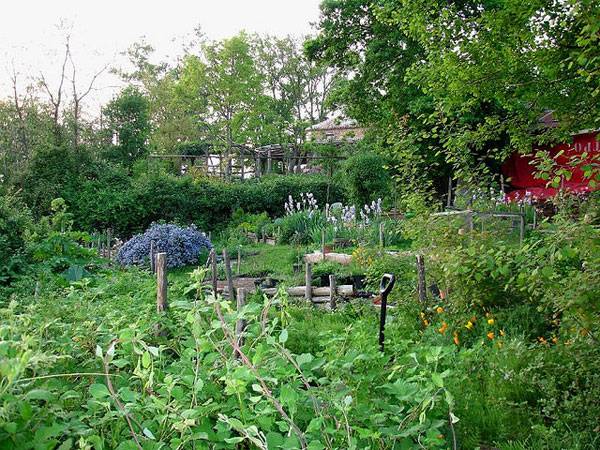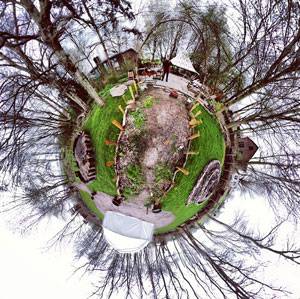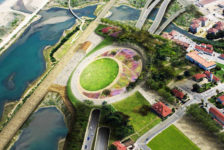What is permaculture? In the most simple definition, it is the combination of the words permanent and agriculture, which also reveals its meaning. The Oxford English Dictionary defines permaculture as “the development of agricultural ecosystems intended to be sustainable and self-sufficient,” but this definition is a little vague. Shouldn’t all agricultural ecosystems be sustainable and self-sufficient? Not necessarily, and the practice of permaculture helps to achieve this. The word permaculture was originally coined by Bill Mollison and David Holmgren in the mid-1970s when they were looking for a way to describe a new approach to design. Their design principles, according to Holmgren, included an “integrated, evolving system of perennial or self-perpetuating plant and animal species useful to man.” They described this new ideology in their book, Permaculture One, and Holmgren Designs still practices it today. WATCH: David Holmgren explains how you can change the world with permaculture But what can permaculture do for the world today? Holmgren’s answer is a simple description of what the practice is and what it does. He says permaculture is a whole-systems thinking approach to design that includes “consciously designed landscapes, which mimic the patterns and relationships found in nature, while yielding an abundance of food, fiber, and energy for provision of local needs. People, their buildings, and the ways in which they organize themselves are central to permaculture. Thus, the permaculture vision of permanent or sustainable agriculture has evolved to one of permanent or sustainable culture.”

Permaculture. Photo credit: Irene Kightley; CC 2.0, source
The twelve design principles of permaculture are:
1. Observe and interact Don’t just sit in an office and design. Go outside and interact with nature, and bring that interaction into sustainable designs. 2. Catch and store energy Look to alternate energy sources such as wind, solar, and kinetic to fuel designs and save energy for future uses. 3. Obtain a yield Don’t design projects that don’t give back to the community. Whether it offers food, beauty, or safety, make sure your project provides an essential need. 4. Apply self-regulation and accept feedback Speak up if a design isn’t sustainable, and don’t encourage environmentally defunct practices by using them. 5. Use and value renewable resources and services This goes back to the ever-popular theory of reduce, reuse, recycle. Don’t just say it; practice it. 6. Produce no waste Equalize cut and fill, take advantage of mature vegetation, and avoid adding unessential elements to designs — all of these will equate to a less wasteful site. 7. Design from patterns to details Find patterns in nature and copy them, then fill in the details as the design progresses to add more authenticity to projects. 8. Integrate rather than segregate One example would be grouping plants together as they would be found in nature, and placing them in locations that would mimic their natural habitats. Do this with every element in the design to produce a thoughtful and sustainable project. 9. Use small and slow solutions Smaller spaces are easier to maintain than larger ones, and solutions that take time to implement are more likely to be lasting ones. So, don’t rush and don’t go too big. 10. Use and value diversity Don’t create monocultures that encourage the rapid spread of disease. Instead, create landscapes that are diverse and able to withstand the test of time. 11. Use edges and value the marginal The areas that stand between major ecosystems are often the most productive, so when laying out a design, include these areas to increase diversity and productivity on site. 12. Creatively use and respond to change Through observation and the anticipation of negative change, it is possible to make positive impacts through timely intervention. So, simply put, watch and learn. WATCH: Permaculture Principles in Application ‒ Geoff Lawton By using all of these principles as design tools, it is possible to truly effect change in the way projects are designed and produced. Take the time to thoroughly research the area in which the site lies and attempt to mimic the conditions that worked and improve on the ones that didn’t. By doing this, the site is sure to survive the test of time and provide for the area it serves, and permaculture will live up to its name. Recommended Reading:
- Gaia’s Garden: A Guide to Home-Scale Permaculture, 2nd Edition by Toby Hemenway
- The Resilient Farm and Homestead: An Innovative Permaculture and Whole Systems Design Approach by Ben Falk
Article written by Erin Tharp Return to Homepage Featured image: Permaculture. Photo credit: Irene Kightley
Published in Blog








